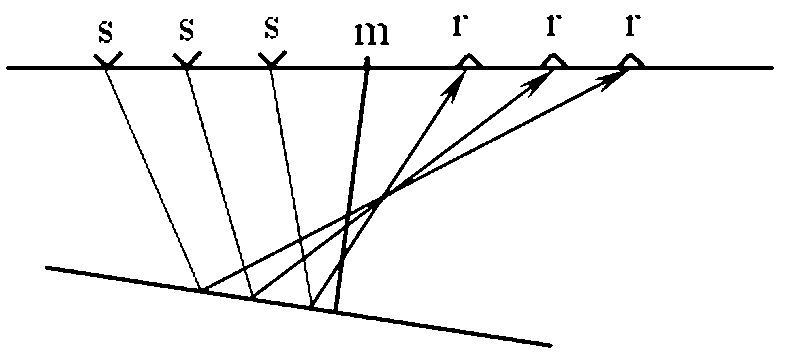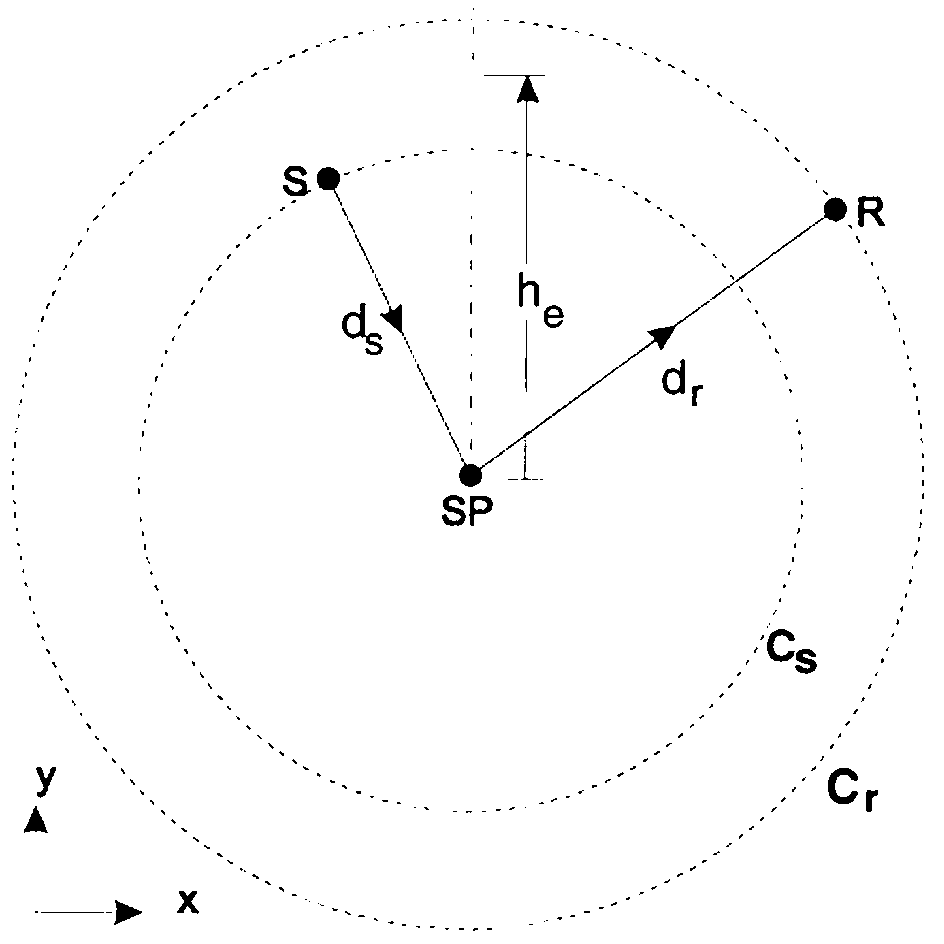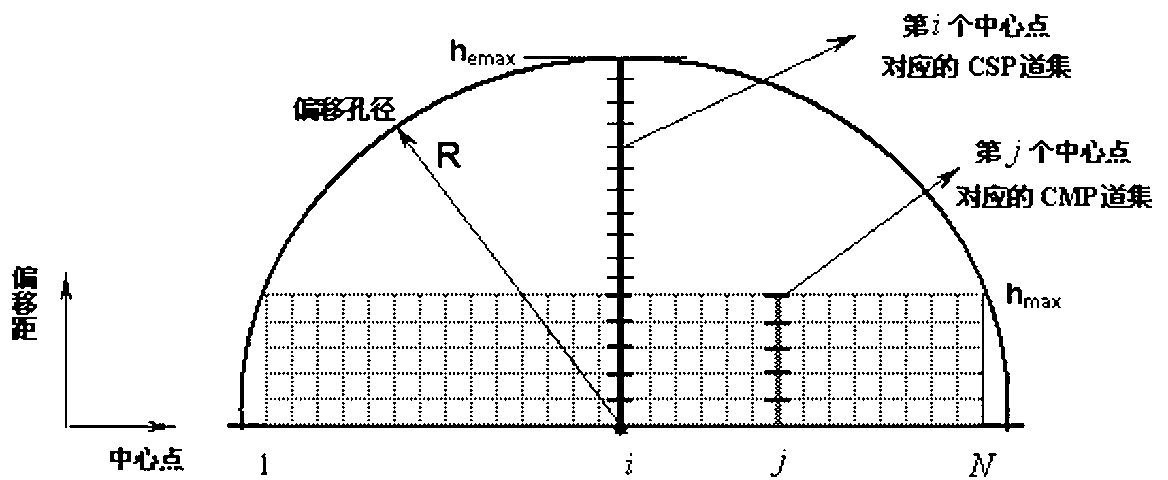Method for analyzing pre-stack time migration and speed based on common scatter point channel set
A pre-stack time migration and velocity analysis technology, applied in seismic signal processing and other directions, can solve the problems of increased difficulty in seismic exploration target reservoir processing and failure to meet actual production requirements, and achieve accurate velocity field and high profile quality Effect
- Summary
- Abstract
- Description
- Claims
- Application Information
AI Technical Summary
Problems solved by technology
Method used
Image
Examples
Embodiment Construction
[0043] 1. The implementation process of pre-stack time migration:
[0044] The time-distance relationship of common scattering point gathers is hyperbolic, and the event of each hyperbolic type basically corresponds to the same scattering point, so there is no reflection point dispersion problem in CMP gathers. Based on the common scattering point gather, the image of the scattering point can be obtained by using conventional normal moveout correction (NMO) and superposition processing, and the images of all common scattering points constitute the pre-stack time migration result. Therefore, the pre-stack time migration based on the common scattering point gather is realized by the following three steps: (1) According to the principle of equivalent offset distance, the common scattering point gather is obtained by mapping the pre-stack 2D or 3D data; (2) It is to perform NMO correction on the co-scattering point gathers to obtain the root mean square velocity; (3) to superimpos...
PUM
 Login to View More
Login to View More Abstract
Description
Claims
Application Information
 Login to View More
Login to View More - Generate Ideas
- Intellectual Property
- Life Sciences
- Materials
- Tech Scout
- Unparalleled Data Quality
- Higher Quality Content
- 60% Fewer Hallucinations
Browse by: Latest US Patents, China's latest patents, Technical Efficacy Thesaurus, Application Domain, Technology Topic, Popular Technical Reports.
© 2025 PatSnap. All rights reserved.Legal|Privacy policy|Modern Slavery Act Transparency Statement|Sitemap|About US| Contact US: help@patsnap.com



